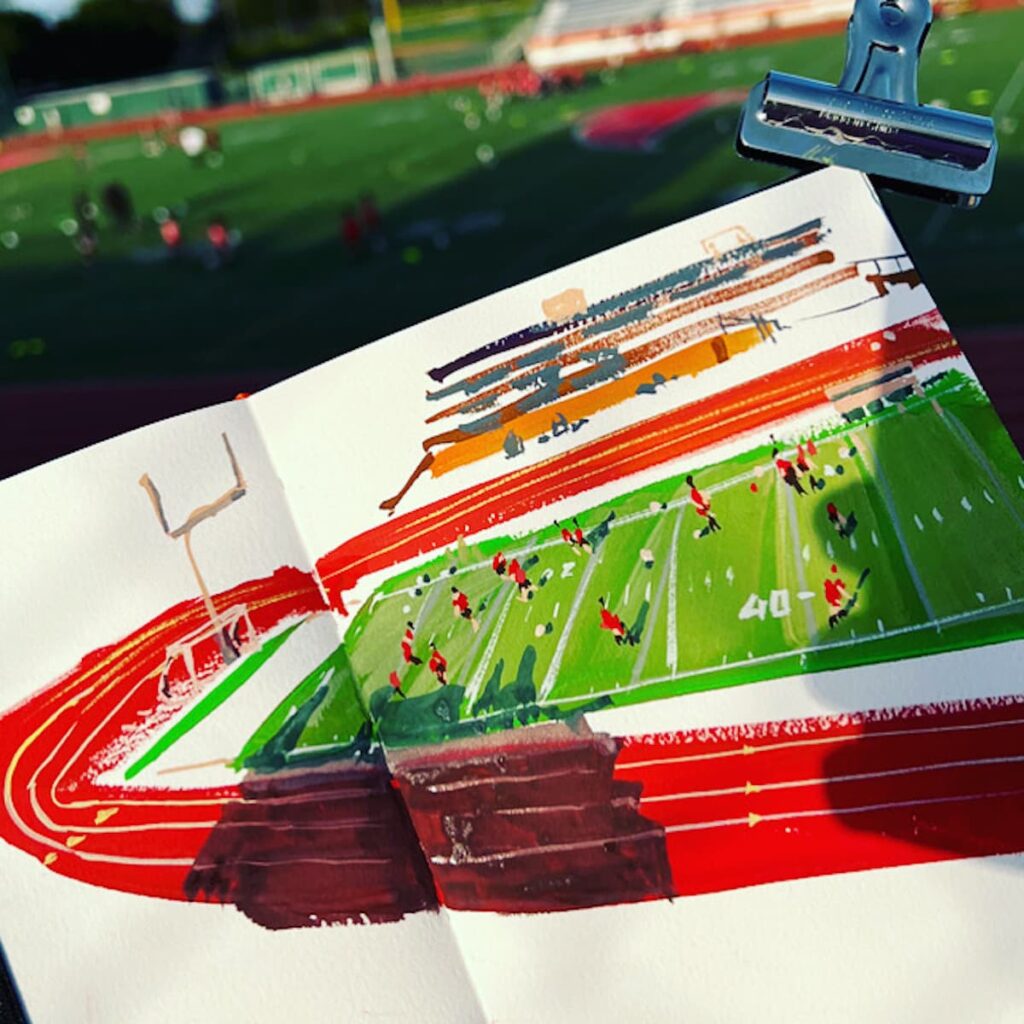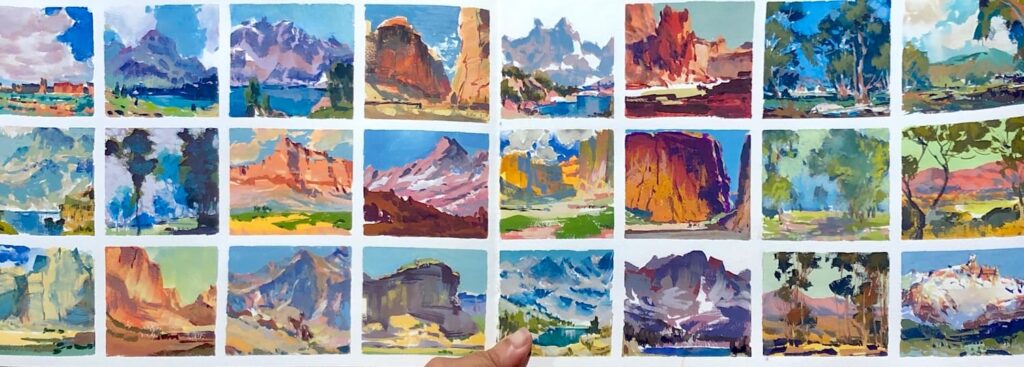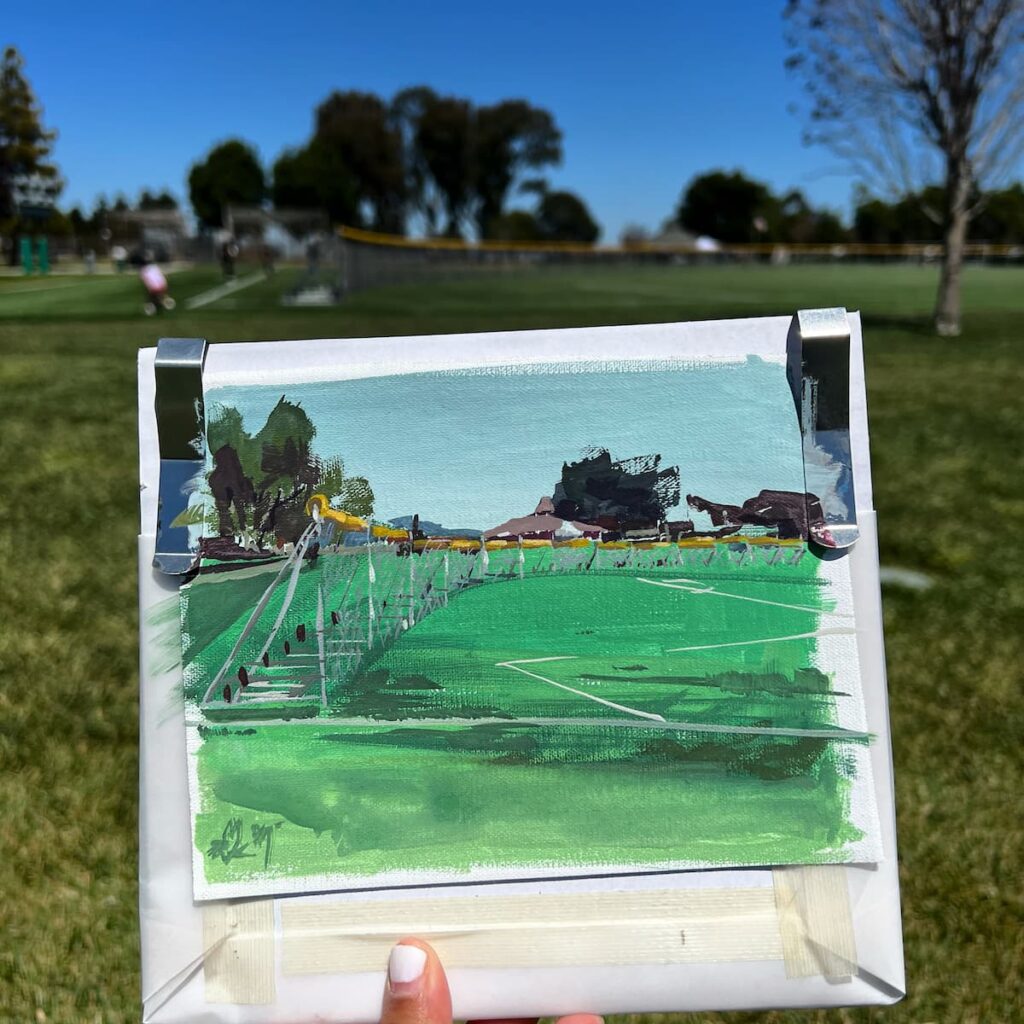Painting With Gouache, 6 Tips for Success

Oh, My Gouache!
Learn from a watercolor artist’s firsthand experience and find out her top tips to get started painting with gouache. Here is everything you need to know to master the art of gouache!
In adulthood, most of our learning experiences occur outside of a school or classroom. These days, much of the new information we take in is picked up online, in podcasts or on social media. In my experience, however, nothing can take the place of hands-on learning and experimentation. Especially when it comes to a new interest or hobby, we can often fast-track the process by learning from the trials and tribulations of our peers.
Originally published in Watercolor Artist Magazine, Summer 2023
I’m predominantly a watercolor painter and instructor, but recently found myself attracted to gouache. Its soft yet opaque colors, and the seeming abandon in the brushstroke application without concern about transparency, piqued my interest. I’m excited to share some of what I learned from my firsthand observations, which will hopefully ease the learning curve should you be considering a foray into the world of opaque watercolor.

Gouache Observations
Observation No. 1
Being the systematic practitioner I am, I elected to begin my gouache journey by painting simple color swatches. The medium’s creamy consistency requires more color-mixing effort than watercolor. I quickly worked my way around the color wheel, gaining a sense of mixing and brush application techniques. The excitement of this experimentation filled me with childlike joy.
I was eager to move forward immediately and put the color combos to work for a full-fledged painting. Instead, I forced myself to continue these exploratory exercises by creating multiple 2×2-inch thumbnails in a sketchbook—an idea I borrowed from animation artist Nathan Fowkes. This gave me the opportunity to familiarize myself with the various mixes, focus on the overall process and observe the medium’s drying time.
Through my experimentation, I learned that adding white gouache to the ground pigments produces attractive pastel colors. It also turns the brush-cleaning water milky, however, and milky water used to mix other colors makes the entire painting chalky. This taught me the importance of wiping the paint off the brush on a paper towel before rinsing the brush in water.


Observation No. 2
After experimenting with the 2-inch squares, I was ready to increase the format size—and find the perfect substrate for doing so. Gouache is surprisingly versatile when it comes to the painting surface. I started my gouache journey in a sketchbook and have since experimented on mixed-media boards, canvas paper and even table coasters.
Each size and substrate has its benefits. The 8×10-inch mixed-media artboards I used are stiff and don’t require backing, making them perfect for painting on the go. Plus, the boards fit perfectly in glass-free floater frames for a 3D effect. This reduces the weight and the cost of the total painting production (although the gouache will likely require a few varnished layers for sales purposes).
Canvas paper and stretched canvas, meanwhile, are made for acrylics and oils, making them suitable surfaces for gouache. The canvas offers an attractive oil painting-like texture that’s ideal for the thicker pigment dabs of gouache initially needed to grab the tooth. I found that if the paint didn’t adhere uniformly to the canvas, pre-painting the surface with diluted paint helped.
As for compactness, I determined that cutting sheets of canvas paper into smaller sizes meant that in the space required for one mixed-media board, I could carry five canvas paper sheets.


Canvas paper and stretched canvas are ideal substrates for gouache.
Observation No. 3
The next eureka moment occurred when I realized that I could use inexpensive brushes for my gouache paintings. I grabbed the basic stiff hobby brushes from my children’s painting sets and have used them ever since. This saves money—and reduces anxiety when traveling.
Since I use a paper towel to wipe my brushes, the water reservoir I carry is as small as the clip-on buckets for oil painting. A sketchbook, an airtight palette, two stiff brushes (stiffer than traditional watercolor brushes) and a clip-on water reservoir make the kit extremely portable and parenting-friendly.
I also travel with an extremely versatile and convenient watercolor painting kit, but the benefit of gouache over watercolor is that it’s less “drippy.” I’m able to work on more painting surfaces without the worry of dirtying them.

Observation No. 4
Painting a series allows me to experiment. I wanted to learn how to control the saturation of colors, so I repeated the scene with full-strength colors and slowly moved them toward gray. I wanted my eyes to get used to seeing the varying grays in my gouache palette and build my ability to intuit how they’d look in the final painting.



I created the same pastoral scene multiple times, working from full-strength color toward shades of gray, to become familiar with gouache color saturation.
Observation No. 5
Inadvertently, I learned that because I can paint a lighter gouache pigment over a darker one, I can work from larger shapes to smaller ones. The time gained by this is lost, though, in the mixing of the paint. As a watercolor painter, I feel the time difference acutely, as moving from the palette to paper, when painting in watercolor, is a quick event, while gouache requires more time. Getting used to this delay was annoying initially, but it’s just part of the process.

Observation No. 6
Using poor-quality masking tape can mar the entire painting when lifted, so working with quality tape is vital. I recommend Nichiban artist’s tape.

Artist’s Toolkit
✓
Paint: Maimeri Gouache
✓
Surfaces: Sketchbook, Canson Mix Media Artboards, canvas paper, stretched canvas
✓
Miscellaneous: Stiff hobby brushes, paper towels, Nichiban masking tape
Your Turn
I suggest you prepare multiple substrates of the same size and tape them on top of one another so you can quickly peel each one off as you complete a painting. You’ll get used to gouache’s tackiness, learn how to wield brush control and navigate the disappearance of your initial sketch due to the paint’s opacity more quickly when you make a few quick paintings in succession.

Gouache, Darn It
Using an opaque medium won’t refine your transparent watercolor skills, but it can help you develop and strengthen your painting “muscle memory.” Many of my watercolor students struggle to make thick watercolor mixes on their palettes. I try to encourage the muscle memory of mixing thick paint and experiencing the required subsequent tackiness.
Gouache, owing to its chemical properties, ensures that artists start with pigments at maximum viscosity, which can then be diluted with substantial amounts of water. This process builds muscle memory in the painting hand—and is something that can’t be taught by words alone.
Meet the Artist
Uma Kelkar, from San Jose, Calif., who has a background in engineering, refers to herself as an “artist-engineer combo.” The artist and workshop instructor is a Signature Member of the National Watercolor Society, the California Watercolor Association and the Canadian Society of Painters in Water Colour. She has won multiple creative awards, and her work can be found at umakelkar.com, @umapaints on Instagram and @UmaKelkar on YouTube.
Originally published in Watercolor Artist Magazine, Summer 2023
















Join the Conversation!